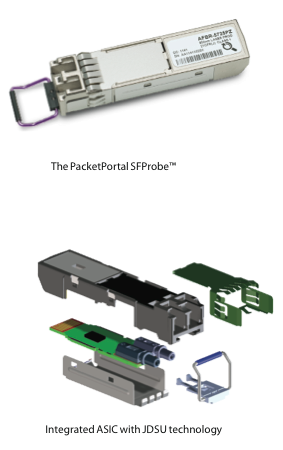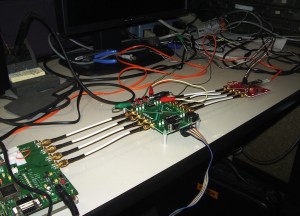In 2004 my friend Alex Tudor of Agilent involved ntop on a very challenging project. The idea was to monitor the network from the exact place where packets were originated. In fact popular network taps and span ports are not the right tools as they are added to an existing network (i.e. the network does not need them, but probes do need them). The same applies to active monitoring: traffic should be generated from the right place. So if you want to see the router-to-router latency you should let the router ping the other router, and not an external PC connected to such router. To make this long story short, Agilent decided to put the probe on the best place: namely on the SFP. This is because network equipment need SPFs and putting the intelligence there means that the probe is on the equipment side, on a vendor-independent place. You can imagine that we were involved on the software side (unfortunately we can’t build hardware here) and Agilent on the hardware side. You can see how hardware moved from testing boards
to a complete product. After 6 years since the beginning of the project, JDSU (the former Agilent group running the project was incorporated on that company) has finally made the magic.
 They managed to squeeze everything into an ASIC chip and what we prototyped so many years ago is finally a product. Obviously this product is ntop-friendly as nProbe is a JDSU PacketPortal-Validated application. This means that using nProbe with PacketPortal you can analyze not just Internet traffic, but also Triple Play and mobile network traffic including LTE (didn’t you know nProbe was able to do that?).
They managed to squeeze everything into an ASIC chip and what we prototyped so many years ago is finally a product. Obviously this product is ntop-friendly as nProbe is a JDSU PacketPortal-Validated application. This means that using nProbe with PacketPortal you can analyze not just Internet traffic, but also Triple Play and mobile network traffic including LTE (didn’t you know nProbe was able to do that?).
JDSU has funded many nProbe developments including the VNIC integration features (VLAN tags used as netflow interface id), and if nProbe moved off a research project into a more industry-oriented (yet open source) solution it’s also thanks for all the comments we received during this project. If interested, you can visit the PacketPortal page (click on the “Related Products” for jumping to nProbe). Many thanks to Alistair Scott of JSDU for making all this happen.

